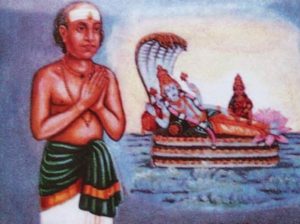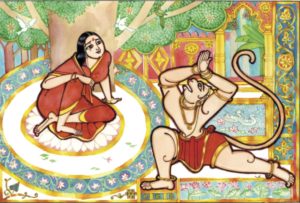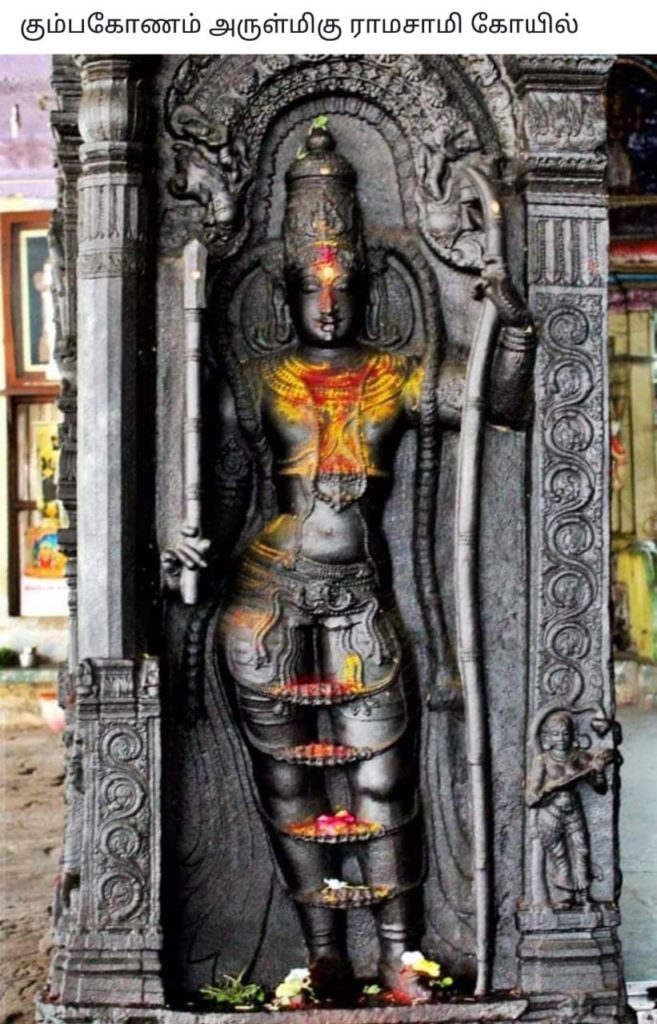ARUNACHALA KAVIRAYAR:
The Shaivaite Tamil Scholar Who Spread Ram Nam among Tamil Masses

The answer to the question as to who took Sri Ram to Tamil masses is Arunachala Kavirayar. The Tamil scholar who lived in the 18th century thoughtfully chose the medium of stage play for narrating Ramayana. His Rama Natakam was staged in remote places of Tamilnadu. The script was in the colloquial Tamil form and
 therefore rural men and women could easily identify themselves with the dialogues of the characters in the drama. Arunachala Kavirayar had woven a number of songs into the story. That again enabled universal acceptance of the work. In fact, the Rama Naatakam was known for Ramanataka Kirtanais – the hymns extolling Sri Ram. Thus Rama Natakam can be classified as an Opera or Sangita Natakam. As the Kavirayar had employed expressions and words that enable communication of the Rasa Bhava in a Natya performance, the work deserves the epithet Dance Drama as well. Well known Carnatic vocalists helped in a big way to popularise Kavirayar’s Ramayana by rendering his Kirtanais during their stage recital programmes over several decades. Even Kamban was not so lucky, so to say. As it was in verse form, his divine masterpiece, the Kamba Ramayana, remained in the scholarly circuit, requiring deft annotations by Hari katha exponents to reach a wider audience. Not so in the case of Rama Natakam.
therefore rural men and women could easily identify themselves with the dialogues of the characters in the drama. Arunachala Kavirayar had woven a number of songs into the story. That again enabled universal acceptance of the work. In fact, the Rama Naatakam was known for Ramanataka Kirtanais – the hymns extolling Sri Ram. Thus Rama Natakam can be classified as an Opera or Sangita Natakam. As the Kavirayar had employed expressions and words that enable communication of the Rasa Bhava in a Natya performance, the work deserves the epithet Dance Drama as well. Well known Carnatic vocalists helped in a big way to popularise Kavirayar’s Ramayana by rendering his Kirtanais during their stage recital programmes over several decades. Even Kamban was not so lucky, so to say. As it was in verse form, his divine masterpiece, the Kamba Ramayana, remained in the scholarly circuit, requiring deft annotations by Hari katha exponents to reach a wider audience. Not so in the case of Rama Natakam.
His Holiness Kanchi Mahaswami traced the lineage of Kavirayar to emphasize the Shaiva – Vaishnava unity which was very dear to his holiness’ heart. Here goes the narration by the Seer: “The very name of the poet (Arunachalam, a name of Shiva) who narrated the Ramayana (the story of an Avatar of Vishnu) underlines the Shaiva-Vaishnava aikyam. He was born in a community of Vellalas that had returned to Shaivism from Jainism. In fact, he learnt Tamil and Sanskrit at the Dharmapura Aadheenam, a Shaiva Mutt. He developed a taste for Rama Katha and it resulted in the creation of his kavya, the Rama Natakam. He migrated to Sirkazhi (birthplace of Thiru Gnanasambandhar) from Thillaiyadi in Thanjavur district, where he was born.”

